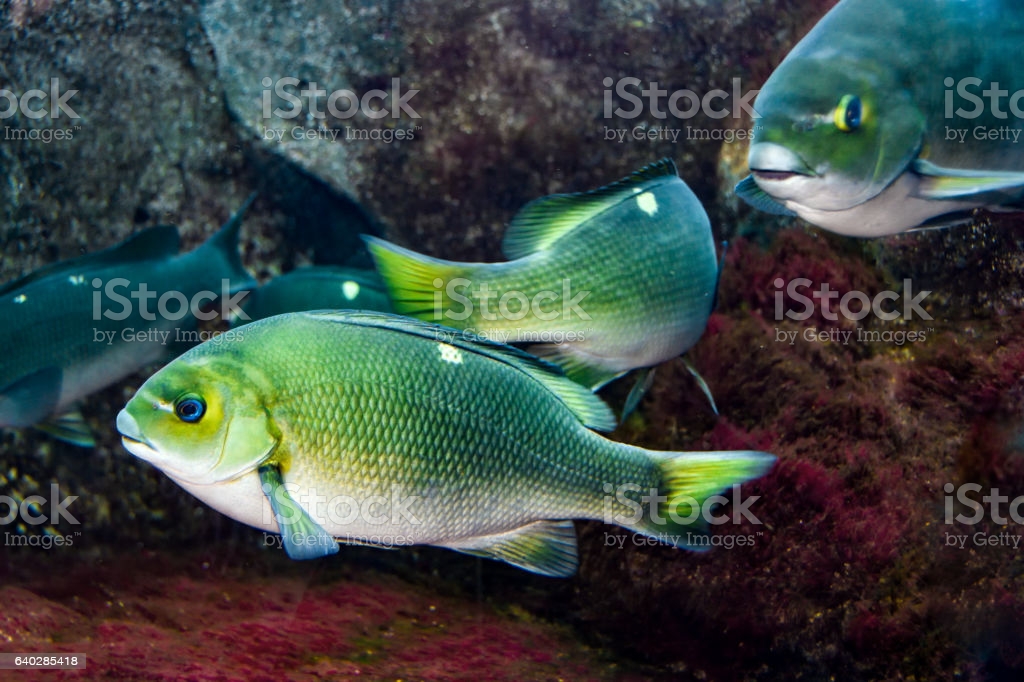ANIMAL: Opaleye Girella nigricans Type of Animal: Sea Chub Habitat: Temperate shallow kelp forest, kelp beds, shallow rocky reefs, tide pools, shallow areas over rocks/kelp beds, intertidal zones over rocks/kelp beds, rocky areas, rocky shorelines, found in depths of 3.3-105 ft, juveniles more common in intertidal areas Location(s): E Pacific from N California to Baja California Sur as well as Gulf of California Appearance: Laterally compressed oval-bodied fish w/ blunt short snout, short rounded blunt fins, opal blue-green eyes, adults gray-green to olive-green, juveniles bluish on dorsal surface & silvery on ventral surface, continuous dorsal fin, straight margined tail fin Food/Diet: Kelp, sea lettuce, seaweed, seagrass, algae, tubeworms, crustaceans, hydroids Status in Wild: Stable Conservation: Not applicable Lifestyle: Schools of 10-50 fish Additional Info: Called: Male Female Young: Fry Group: School Weight: 5-10 lbs Gestation: 1-3 days Life Span: 12 years Body Length: Adult: 6.96-20.4 in Young: 1 in Main predators are pinnipeds, birds, & larger fish. Also called rudderfish, opaleye perch, green perch, blue bass, button bass, Catalina perch, & blue-eye perch, jack benny, button-back, chopa verde, greenfish, bluefish, & black perch. Juveniles have tricuspid teeth while adults have simple teeth. Spawning occurs from April-June. These fish broadcast spawners, releasing sperm/eggs into water to fertilize. Eggs/larvae free floating. Reach maturity at 2 years old. These fish are quite fast. Sometimes school w/ other fish species. These fish can be very skittish. Gets opaleye name due to eyes & rudderfish name due to rudder-like tail. Gulf of California population may be genetically distinct. Fun Fact(s): Sometimes confused w/ Halfmoons, Gulf Opaleyes, & Zebra Perch. Very popular gamefish in California. Frozen peas very popular bait used when catching these fish. Can breathe air when out of water. These fish are most commonly fried or grilled. These fish most often caught from shores/piers. These fish known to be very hard to hook/catch & sometimes put up a fight when hooked. Sea lions often get lungworm due to eating these fish. These fish are a common intermediate host for lungworm Parafilaroides decorus (Sea Lion Lungworm), which is common cause of death for sea lions.
